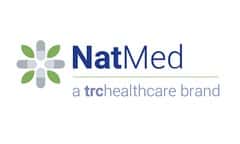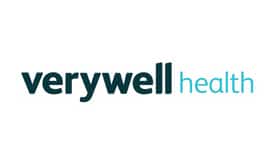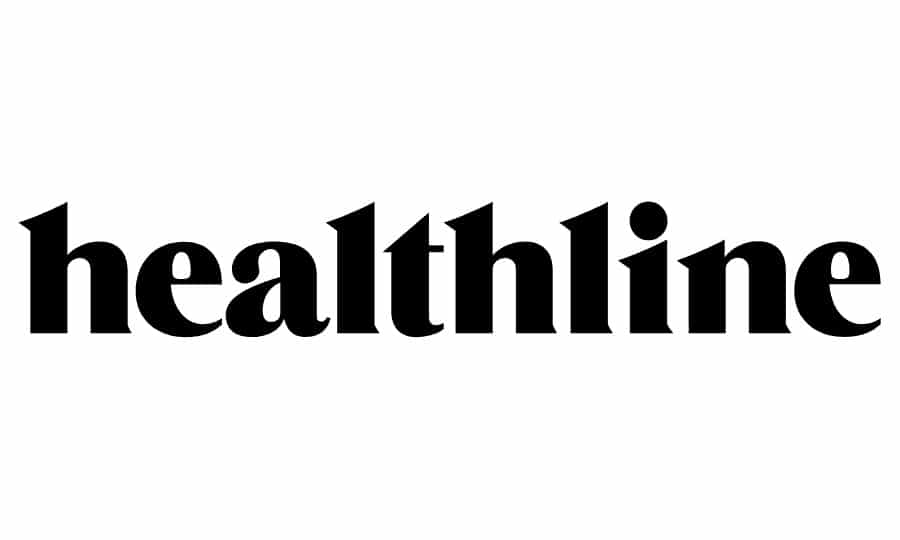Vitamin D is a hormone created by the body when skin is exposed to ultraviolet rays in sunlight. It is found naturally in a small number of foods and can also be taken as a fat-soluble dietary supplement.
How do experts use vitamin D?
Both medical groups and integrative experts provide recommendations for vitamin D in treating people with cancer. Learn more about the approaches and meanings of recommendations: Integrative Oncology Programs and Expert Guidelines ›
Clinical practice guidelines
More guidelines, specific to medical professionals, are in Are you a health professional?
This 2011 guideline suggests defining vitamin D deficiency as 25(OH)D levels below 20 ng/mL, insufficiency as 25(OH)D of 21–29 ng/mL, and sufficiency starting at 30 ng/mL.
These guidelines suggest that all adults who are vitamin D deficient be treated with 50,000 IU of vitamin D2 or vitamin D3 once a week for 8 weeks or its equivalent of 6000 IU of vitamin D2 or vitamin D3 per day to achieve a blood level of 25(OH)D above 30 ng/ml, followed by maintenance therapy of 1500–2000 IU per day.
The 2017 guidelines regarding breast cancer patients evaluates vitamin D2 as having insufficient evidence to recommend using for pain.
Researchers from these organizations found insufficient evidence to recommend vitamin D to treat aromatase inhibitor-related joint pain.
Published protocols, programs, and approaches
Vitamin D is used in programs, approaches, and protocolsa package of therapies combining and preferably integrating various therapies and practices into a cohesive design for care from these integrative oncologists, drawing from both scientific research and observations from years or even decades of treating people with cancer.
Lise Alschuler, ND, FABNO, and Karolyn Gazella
Alschuler LN, Gazella KA. The Definitive Guide to Cancer, 3rd Edition: An Integrative Approach to Prevention, Treatment, and Healing. Berkeley, California: Celestial Arts. 2010.
Alschuler LN, Gazella KA. The Definitive Guide to Thriving after Cancer: A Five-Step Integrative Plan to Reduce the Risk of Recurrence and Build Lifelong Health. Berkeley, California: Ten Speed Press. 2013.
Approaches are described for certain cancer types, or along with certain conventional therapy treatments, or for particular conditions such as insulin resistance.
Uses of vitamin D:
- Breast cancer
- Colon cancer
- Kidney cancer
- Lung cancer
- Melanoma
- Ovarian cancer
- Prostate cancer
- Blood sugar support
Keith Block, MD
Block KI. Life over Cancer: The Block Center Program for Integrative Cancer Care. New York: Bantam Dell. 2009.
The integrative Block Program has recommendations to people who are at different places along the cancer continuum:
- Those who’ve been recently diagnosed
- Those in treatment
- Those who’ve concluded treatment and need to remain vigilant to prevent recurrence
Uses of vitamin D:
- Core diet plan: vitamin supplementation
- Symptom management: osteoporosis
- Blood sugar support and terrain modification
- Progression pathway targeting
- Remission maintenance program: chemoprevention
Dr. Block says that off-label use of calcitriol, which is the most active form of vitamin D, is of particular interest in prostate cancer. Preclinical evidence shows clear benefit and early clinical evidence to date is promising but not yet conclusive.2Ben-Eltriki M, Deb S, Guns ES. Calcitriol in combination therapy for prostate cancer: pharmacokinetic and pharmacodynamic interactions. Journal of Cancer. 2016 Jan 15;7(4):391-407.
Dr. Block cautions against giving alpha-tocopherol alone, as this may deplete the body of other important components of vitamin E.
Raymond Chang, MD, FACP
Chang R. Beyond the Magic Bullet: The Anti-Cancer Cocktail. New York: Square One Publishers. 2012.
This book describes a “new therapy based on the knowledge that certain off-label drugs, nutrients, and therapies are each somewhat effective against cancer.” Dr. Chang combines approaches for added benefit.
Gerald M. Lemole, MD; Pallav K. Mehta, MD; and Dwight L. McKee, MD
Lemole GM, Mehta PK, McKee DL. After Cancer Care: The Definitive Self-Care Guide to Getting and Staying Well for Patients with Cancer. New York, New York: Rodale, Inc. 2015.
These doctors present easy-to-incorporate lifestyle changes to help you “turn on” hundreds of genes that fight cancer, and “turn off” the ones that encourage cancer, while recommending lifestyle approaches to address each type.
Uses of vitamin D:
- Bladder cancer
- Breast cancer
- Colorectal cancer
- Endometrial cancer
- Leukemia
- Lung cancer
- Lymphoma
- Melanoma
- Prostate cancer
- Renal cancer
- Thyroid cancer
Barbara MacDonald, ND, LAc
MacDonald B. The Breast Cancer Companion—A Complementary Care Manual: Third Edition. Self-published. 2016.
Naturopathic physician Barbara MacDonald provides information about breast cancer, its conventional treatment, and natural approaches to enhancing treatment, managing side effects, reducing risk of recurrence, and healthy living after cancer treatment is completed.
Neil McKinney, BSc, ND
McKinney N. Naturopathic Oncology, Fourth Edition. Victoria, BC, Canada: Liaison Press. 2020.
This book includes descriptions and uses of many natural and complementary protocols for cancer in general and for specific cancers. It also includes information on integrative support during conventional cancer treatment.
Uses of vitamin D:
- General cancer
- Breast cancer
- Leukemia and myelodysplastic syndrome
- Lung cancer
- Lymphoma
- Melanoma
- Myeloma
- Pancreatic cancer
- Prostate cancer
- Sarcoma
- Skin cancer
- Bastyr University Integrative Oncology Research Center protocol for stage IV breast cancer3McKinney N. Naturopathic Oncology, 3rd Edition. Victoria, BC, Canada: Liaison Press. 2016. p. 316.
Gurdev Parmar, ND, FABNO, and Tina Kaczor, ND, FABNO
Parmar G, Kaczor T. Textbook of Naturopathic Oncology: A Desktop Guide of Integrative Cancer Care. 1st edition. Medicatrix Holdings Ltd. 2020.
This book provides information on the treatment of 24 cancers, plus the most effective treatments of the most common symptoms affecting cancer patients while they undergo chemotherapy, radiotherapy, or surgery.
Uses of vitamin D:
- Chemotherapy Induced Peripheral Neuropathy (CIPN)
- Breast cancer
- Colon cancer
- Head and neck cancer
- Hodgkin lymphoma
- Melanoma
- Myeloma
- Ovarian cancer
- Prostate cancer
- Thyroid cancer
David Servan-Schreiber, MD, PhD
Servan-Schreiber D. Anticancer: A New Way of Life. New York: Penguin Books. 2009.
This book provides tips on how people living with cancer can fight it and how healthy people can prevent it.
Nasha Winters ND, FABNO, LAc, DiplOM, and Jess Higgins Kelley, MNT
Winters ND, Kelley JH. The Metabolic Approach to Cancer. 2017. Chelsea Green Publishing.
This book’s metabolic approach to cancer is a “naturopathic nutrition program that uses the medicinal powers of traditional foods, therapeutic diets and non-toxic lifestyle approaches as cancer counteragents and preventives.“ The program focuses on 10 terrain elements and how to assess them and bring them into balance.
This books lists vitamin for immunity and regulating mood (depression).
Other expert assessments
Donald Abrams, MD, and Andrew Weil, MD
Doctors Abrams and Weil state that vitamin D supplementation along with calcium is recommended for people undergoing treatment that can cause bone loss—such as aromatase inhibitors or surgical oophorectomy—or who have ovarian failure.
Current Oncology Reports
An expert review of evidence suggests that vitamin D “might have a potential role in alleviating cancer-related fatigue” among people with a deficiency.4David A, Hausner D, Frenkel M. Cancer-related fatigue-is there a role for complementary and integrative medicine? Current Oncology Reports. 2021 Nov 7;23(12):145.
Survey of naturopathic physicians
A 2018 survey identified vitamin D as one of the most frequently identified interventions used by members of the Oncology Association of Naturopathic Physicians for lung and gastroesophageal cancer care.5Seely D, Ennis JK, McDonell E, Zhao L. Naturopathic oncology care for thoracic cancers: a practice survey. Integrative Cancer Therapies. 2018 Sep;17(3):793-805.
Dosing
Sun exposure
You make vitamin D when your skin is exposed to relatively intense sunlight. People with light skin can produce sufficient vitamin D with less than 15 minutes of exposure to the sun around noon on a summer day. The time needed increases among people with darker skin, up to two hours for people with very dark skin.
The farther the sun is from directly overhead, the less efficiently you’ll produce vitamin D. A rule of thumb is that you produce vitamin D only if your shadow is shorter than you are.6Vitamin D and Cancer with William B. Grant, PhD. Moss Report Podcast. June 22, 2022. Viewed September 12, 2022. People who live far from the equator may not make any vitamin D in the winter, even when exposed to sunlight at noon.7Raman R. How to safely get vitamin D from sunlight. Healthline. April 28, 2018. Viewed September 12, 2022.
Supplements
Vitamin D measurements: 40 IU=1 microgram
The National Academies Health and Medicine Division (formerly the Institute of Medicine) recommends a daily dietary allowance of vitamin D of 600 IU/day (increasing to 800 IU/day at age 71) with the upper level intake at 4,000 IU/day starting at age nine for healthy individuals.8Institute of Medicine. Dietary Reference Intakes for Calcium and Vitamin D (chapter 7). 2011. Viewed November 2, 2021. Higher doses may be needed among people treated with steroids.9Albert Einstein College of Medicine. Oral steroids linked to severe vitamin D deficiency in nationwide US study. ScienceDaily. September 30, 2011. Viewed March 6, 2019.
Who benefits from supplements?
Taking vitamin D supplements provides benefits mostly among people who have low vitamin D blood levels. A large study found that vitamin D supplementation showed the strongest benefits regarding cancer mortality among people with vitamin D deficiency (less than 12 ng/mL or 30 nmol/L) or insufficiency (from 12 to 20 ng/mL or 30 to 50 nmol/L), with little or no benefit among people who already had sufficient vitamin D levels (above 20 ng/mL or 50 nmol/L).10Brenner H, Jansen L, Saum KU, Holleczek B, Schöttker B. Vitamin D supplementation trials aimed at reducing mortality have much higher power when focusing on people with low serum 25-hydroxyvitamin D concentrations. Journal of Nutrition. 2017 Jul;147(7):1325-1333.
A combined analysis of studies found a daily dose of up to 3000 IU per day of vitamin D increased serum 25(OH)D among women with polycystic ovary syndrome, but higher intake than that did not lead to clear increases in serum levels.11Cochrane KM, Bone JN, Williams BA, Karakochuk CD. Optimizing vitamin D status in polycystic ovary syndrome: a systematic review and dose-response meta-analysis. Nutrition Reviews. 2024 Sep 1;82(9):1176-1186.
Large or small doses?
Smaller frequent doses may be better than an occasional high dose, such as a single bolusa single, large dose of a substance, such as a drug, nutrient, or insulin, within a short period of time dose. A combined analysis of studies found lower risk of death from cancer as a whole among people treated with a daily vitamin D supplement compared to controls (3 studies) but no evidence of an effect on risk from an infrequent large-bolus dose (3 studies).12Keum N, Chen QY, Lee DH, Manson JE, Giovannucci E. Vitamin D supplementation and total cancer incidence and mortality by daily vs. infrequent large-bolus dosing strategies: a meta-analysis of randomised controlled trials. British Journal of Cancer. 2022 Sep;127(5):872-878. Another study found that postmenopausal women with stage 1–3a breast cancer treated with either 600 IU or 4000 IU vitamin D3 daily for 6 months showed the same effects on aromatase inhibitor-associated musculoskeletal symptoms. The large dose did not provide more benefit.13Shapiro AC, Adlis SA et al. Randomized, blinded trial of vitamin D3 for treating aromatase inhibitor-associated musculoskeletal symptoms (AIMSS). Breast Cancer Research and Treatment. 2016 Feb;155(3):501-12.
On the other hand, postmenopausal women treated with 50,000 IU vitamin D3 weekly for 12 weeks followed by 2000 IU daily for 40 weeks saw higher increases in their serum vitamin D levels compared to 800 IU daily for 52 weeks during adjuvant aromatase inhibitor therapy.14Niravath P, Hilsenbeck SG et al. Randomized controlled trial of high-dose versus standard-dose vitamin D3 for prevention of aromatase inhibitor-induced arthralgia. Breast Cancer Research and Treatment. 2019 Sep;177(2):427-435. The unanswered question is whether those higher increases in vitamin D levels were beneficial.
Dosage has not been standardized for use in cancer care, but recommendations are available from these sources:

Subscription required
Beer TM, Hough KM et al. Weekly high dose calcitriol and docetaxel in advanced prostate cancer. Seminars in Oncology. 2001;28(4 Suppl 15):49–55.
Also see published programs and approaches (above).
General information about dosing
Find general dosing guidelines regarding natural products and supplements in Dosing Guidelines ›
Expert commentary
Dosing vitamin D supplements
CancerChoices Senior Clinical Consultant Laura Pole, RN, MSN, OCNS: In dosing vitamin D to bring up to therapeutic levels, keep in mind that many clinicians, including CancerChoices advisor Donald Abrams, MD, feel that doses greater than 4000 IU daily lead to increased risk of calcification of blood vessels. Dr. Katz reports that he has not seen any problems dosing with 5000 IU vitamin D per day for 3 months, then re-checking the vitamin D level. We advise not to take high doses of vitamin D without medical advice and supervision.
Take vitamin D with healthy fats
Kelly Burch and Allison Herries, RDN, from VeryWell Health: “Vitamin D is a fat-soluble vitamin, which means the body processes them in a similar way that it processes fat. Because of that, it’s best to take vitamin D with a meal that contains some healthy fats.”15Burch K. Magnesium and vitamin D: benefits, dosage, and why to consider taking both. VeryWell Health. December 14, 2023. Viewed December 18, 2023.
Can you wash vitamin D from your skin?
A claim has circulated widely that vitamin D produced in your skin is subject to removal if you wash with soap after sun exposure. Experts say this is not likely: “After exposure to sunlight vitamin D3 remains in the skin even when the skin is washed with soap and water immediately after the exposure to sunlight.”16Wacker M, Holick MF. Sunlight and vitamin D: a global perspective for health. Dermatoendocrinology. 2013 Jan 1;5(1):51-108.
Dr. James Spurgeon discusses how vitamin D is produced in your skin and not able to be washed off after sun exposure.
Play videoHelpful links
References




